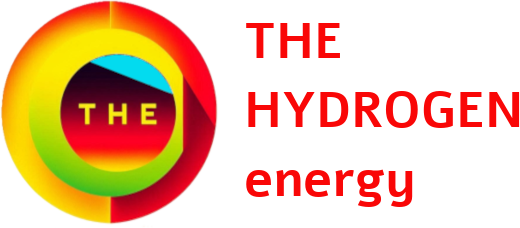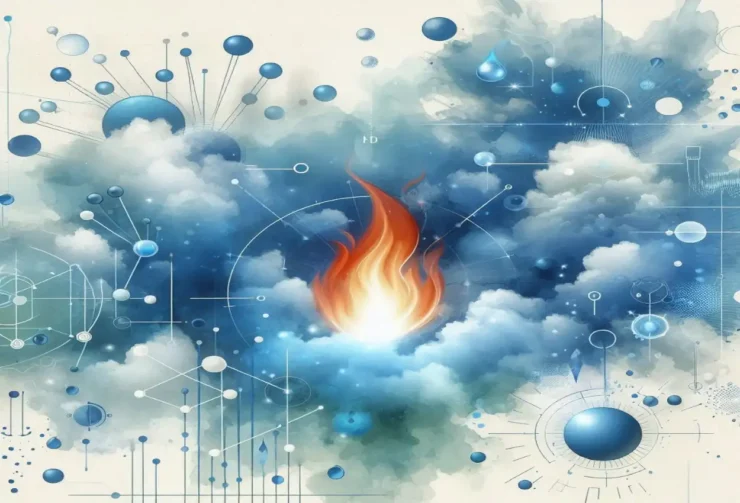Understanding Hydrogen Flame temperature or Hydrogen Fire Temperature at normal open air conditions and room temperature and knowing the importance of Hydrogen Combustion Characteristics is crucial for hydrogen safety, precautions, mitigations and preventing hazards while using hydrogen in any form or in any day to day application. For understanding purpose Hydrogen Flame Temperature is compared with that of household LPG, CNG flame temperatures at normal air conditions.
Introduction
Hydrogen is increasingly recognized as a vital clean energy carrier. For engineers, researchers, and safety professionals working with hydrogen-based technologies, understanding hydrogen flame temperature , thus hydrogen fire temperature is paramount to designing systems that are both efficient and safe. This article offers a comprehensive comparative analysis of hydrogen flame temperature or hydrogen burning temperature under various conditions, emphasizing practical insights for informed decision-making.
Understanding of Hydrogen Flame Temperature
Hydrogen burning Temperature or Flame temperature is the heat generated during combustion, playing a crucial role in system design and performance. While adiabatic flame temperature represents a theoretical maximum (assuming no heat loss), actual flame temperatures are often lower due to real-world factors. Beyond temperature, a grasp of key hydrogen combustion characteristics – flame color, emissions, and stability – is essential for the design of direct hydrogen combustion applications.
The following table provides a quick comparison of the typical temperature ranges of hydrogen, domestic LPG, and CNG flames in air at normal room temperature and pressure (NRTP). These values represent real-world measurements and take into account factors like heat losses and non-ideal combustion conditions. We can easily say hydrogen combustion in normal air produces temperature beyond 2000°C , much higher than the household LPG/CNG stoves.
| Fuel | Typical Temperature Range (NRTP) |
| Hydrogen in Air | 1800°C to 2200°C (3272°F to 3992°F) |
| Hydrogen in Pure Oxygen | 2500°C to 3000°C (4532°F to 5432°F) |
| LPG in Air | 1700°C to 1950°C (3092°F to 3542°F) |
| CNG in Air | 1760°C to 1930°C (3200°F to 3506°F) |
| Hydrogen Blend 10% CNG | 1780°C to 1950°C (3236°F to 3542°F) |
| Hydrogen Blend 10% LPG | 1760°C to 1940°C (3200°F to 3524°F) |
LPG and CNG: These fuels have lower flame temperatures compared to hydrogen but are widely used due to their availability and infrastructure. Hydrogen Blends, adding hydrogen to CNG or LPG increases the flame temperature slightly, improving combustion efficiency and reducing carbon emissions.
Hydrogen Flame Temperature: Comparative Analysis Across Different Scenarios
Stoichiometric Combustion in Air: The stoichiometric reaction for hydrogen combustion in air is: 2H2+O2+3.76N2→2H2O+3.76N22H2+O2+3.76N2→2H2O+3.76N2
Here, nitrogen does not participate in the reaction but absorbs heat.
The specific hydrogen flame temperature achieved is highly dependent on the combustion environment. Let’s examine common scenarios:
- Scenario 1: Hydrogen in Air (at Normal Room Temperature and Pressure) and Its Hydrogen Flame Temperature: This represents the most common application scenario. Hydrogen combines with air (approximately 21% oxygen, 78% nitrogen, and trace gases) at normal room temperature and pressure (NRTP, 20-25°C, 1 atm).
- Adiabatic Hydrogen Flame Temperature: Roughly 2400 K (2127°C or 3860°F).
- Typical Temperature Range: In practice, hydrogen flame temperatures range from 1800°C to 2200°C (3272°F to 3992°F) due to heat losses.
- Scenario 2: Hydrogen in Pure Oxygen (at Normal Room Temperature and Pressure) and the Elevated Hydrogen Flame Temperature: This scenario unlocks exceptionally high temperatures. Hydrogen combines with pure oxygen at NRTP.
- Adiabatic Hydrogen Flame Temperature: Reaches roughly 3100 K (2827°C or 5120°F). The lack of inert nitrogen drastically increases heat release.
- Typical Temperature Range: 2500°C – 3000°C (4532°F – 5432°F). Extremely difficult to achieve stabilized flame conditions in practice. High heat flux may melt/degrade many standard instruments. Requires advanced measurement techniques such as optical emission spectroscopy
- Scenario 3: 10% Hydrogen Blended with CNG in Air (at Normal Room Temperature and Pressure) and Its Flame Temperature: A transitional fuel strategy. Hydrogen is blended with compressed natural gas (CNG) and then combusted with air at NRTP.
- Adiabatic Hydrogen Flame Temperature: Roughly 2270 K (2000°C or 3632°F).
- Typical Temperature Range: Ranges from 1600°C to 2000°C (2912°F to 3632°F), which relies on CNG blend, proper equipment and mixing ratios.
- The Significance of NRTP: As above, primarily affects ignition and combustion rates.
Factors That Influence Hydrogen Flame Temperature and Combustion Characteristics
Multiple factors contribute to variations in hydrogen flame temperature:
- Heat Losses: can drastically change the temperature
- Mixture ratio which is a key in defining the right mixing of the gasses to avoid non combustion ratios
- Pressure is an important factor to regulate correct burning of the gasses
- Preheating the reactants (hydrogen and Air/Oxygen) can increase the flame temperature further. For example, preheating to 500°C can increase the adiabatic flame temperature by several hundred degrees
Hydrogen flame temperature – The Critical Characteristics to take into account:
| Parameter | Hydrogen in Air at NRTP | Hydrogen in Pure Oxygen at NRTP | LPG in Air at NRTP |
| Fuel Composition | Pure Hydrogen (H2) | Pure Hydrogen (H2) | Primarily Propane (C3H8) and Butane (C4H10) |
| Oxidizer | Air | 100% Oxygen | Air |
| Adiabatic Flame Temperature | 2400 K (2127°C or 3860°F) | 3100 K (2827°C or 5120°F) | Approximately 2200 K (1927°C or 3500°F) |
| Typical Temperature Range | 1800°C to 2200°C (3272°F to 3992°F) | 2500°C – 3000°C (4532°F – 5432°F) | 1700°C – 1950°C (3092°F – 3542°F) |
| Influence of NRTP | Impacts Ignition and Reaction Rates | Impacts Ignition and Reaction Rates | Impacts Ignition and Reaction Rates |
| Applications | Most common applications | Highly Specialized | Widely Used in Heating, Cooking, Transportation |
| Materials Considerations | High-Temp Alloys | Refractory Metals, Ceramics | Standard Materials |
| Relative Fire Risk | Manageable | Extremely High | Manageable |
| Flame Color (Daytime) | Almost Invisible; Very Faint Blue (often undetectable) | Brilliant Blue-White (Very Intense) | Yellow-Orange |
| Flame Color (Nighttime) | Faint Blue | Intense Blue-White | Yellow-Orange |
| Emissions | Primarily H2O, Some NOx (depends on combustion temp) | Primarily H2O (very low NOx if controlled) | CO2, H2O, NOx, Unburned Hydrocarbons |
| Combustion Efficiency | Up to 60% (in optimized engines) | Near 100% (highly efficient) | 70-90% (depending on burner design) |
| Flame Speed | Up to 3 m/s (laminar) | Significantly Higher than Air – Detonation Potential | Lower than Hydrogen, Typically Subsonic |
| Ignition Energy | Very Low (~0.02 mJ) | Very Low | Moderate (Higher than H2, Lower than CH4) |
| Quenching Distance | Very Small (~0.1 mm) | Very Small | Larger than Hydrogen |
| Combustion Efficiency(%) | 40 – 60 depends on engine design | 90 – 99 depends on engine design | 70 – 90 – depends on burner design |
Expanded Parameter Definitions:
- Flame Color (Daytime/Night time): Describes the visible color of the flame under typical viewing conditions.
- Emissions: Specifies the primary products of combustion.
- Combustion Efficiency: Indicates the percentage of fuel energy converted to useful work.
- Flame Speed: Reflects the rate at which the flame propagates.
- Ignition Energy: The minimum energy needed to ignite the mixture.
- Quenching Distance: The minimum gap size to prevent flame propagation.
Conclusion: Utilizing Hydrogen Flame Temperatures Safely and Efficiently
This analysis has provided the characteristics of hydrogen flame. Safe operation needs to be implemented with the right characteristics to mitigate explosion rates.
We must ensure safety conditions with the right protocols for high temperatures and high heat, and optimize the process for both efficient use and lower emissions. The future is on using hydrogen safely.







Add comment